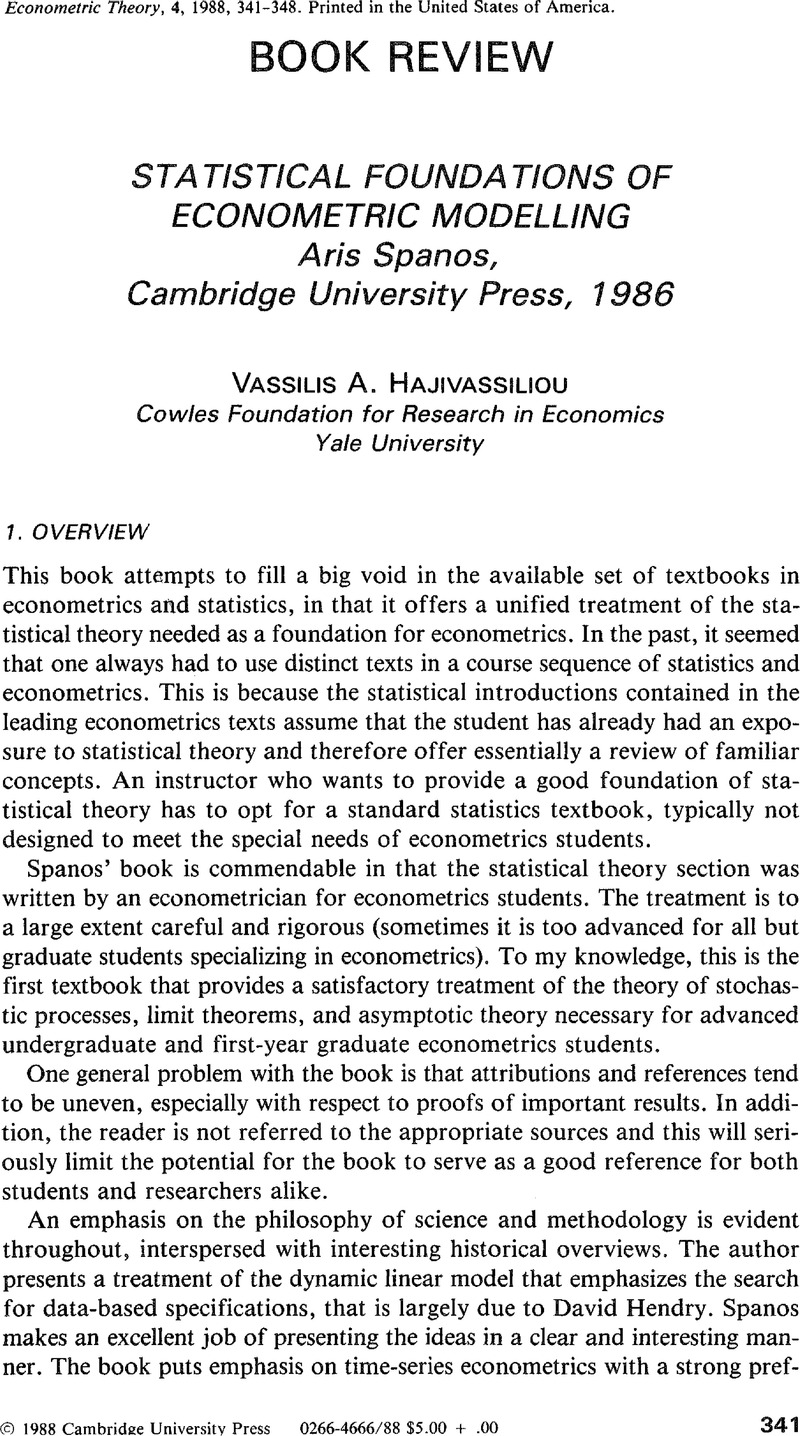No CrossRef data available.
Article contents
Statistical Foundations of Econometric Modelling Aris Spanos, Cambridge University Press, 1986
Published online by Cambridge University Press: 18 October 2010
Abstract
An abstract is not available for this content so a preview has been provided. Please use the Get access link above for information on how to access this content.

- Type
- Book Review
- Information
- Copyright
- Copyright © Cambridge University Press 1988
References
REFERENCES
1. Cox, D.R. & Hinkley, D.V.. Theoretical statistics. London: Chapman and Hall, 1974.10.1007/978-1-4899-2887-0Google Scholar
2. Durbin, J., Maximum-likelihood estimation of the parameters of a system of simultaneous regression equations. London School of Economics working paper, presented at the Copenhagen meetings of the Econometric Society (1963).Google Scholar
3. Engle, R.F. & Granger, C.W.J.. Co-integration and error correction: representation, estimation, and testing. Econometrica 55 (1987): 251–276.10.2307/1913236Google Scholar
4. Hansen, L.P. Large sample properties of generalized method of moments estimators. Econometrica 50 (1982): 1029–1054.10.2307/1912775Google Scholar
5. Hendry, D.F. The structure of simultaneous equations estimators. Journal of Econometrics 4 (1976): 51–88.10.1016/0304-4076(76)90017-8Google Scholar
8. Maddala, G.S. Limited dependent and qualitative variables in econometrics. New York: Cambridge University Press, 1983.10.1017/CBO9780511810176Google Scholar
9. Phillips, P.C.B. Finite sample theory and the distributions of alternative estimators of the marginal propensity to consume. Review of Economic Studies 47 (1980): 183–224.10.2307/2297109Google Scholar
10. Phillips, P., Time, C.B. series regression with unit roots. Econometrica 55 (1987): 277–302.10.2307/1913237Google Scholar
12. Quandt, R.E. Econometric disequilibrium models. Econometric Reviews 1 (1982): 1–64.10.1080/07311768208800001Google Scholar
13. Rothenberg, T.J. Approximating the distribution of econometric estimators and test statistics. In Griliches, Z. & Intrilligator, M.D. (eds.), Handbook of Econometrics, Vol. II, Chapter 15. Amsterdam: North Holland, 1984.Google Scholar
14. Sargan, J.D. Econometric estimators and the Edgeworth approximation. Econometrica 44 (1976): 421–448; erratum, 45: 272.10.2307/1913972Google Scholar
15. Taylor, W.E. Small sample properties of a class of two-stage Aitken estimators. Econometrica 45 (1977): 497–508.10.2307/1911224Google Scholar
16. Taylor, W.E. The heteroscedastic linear model: exact finite sample results. Econometrica 46 (1978): 663–675.10.2307/1914239Google Scholar
17. White, H. & Domovitz, I.. Nonlinear regression with dependent observations. Econometrica 52 (1984): 643–661.10.2307/1911465Google Scholar




